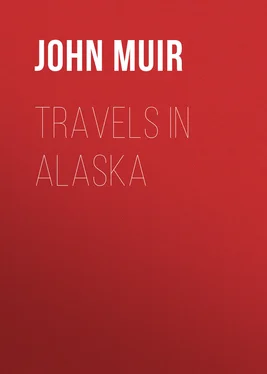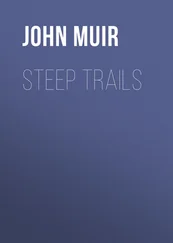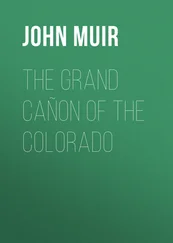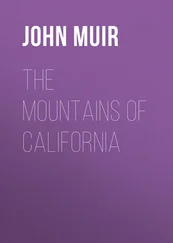John Muir - Travels in Alaska
Здесь есть возможность читать онлайн «John Muir - Travels in Alaska» — ознакомительный отрывок электронной книги совершенно бесплатно, а после прочтения отрывка купить полную версию. В некоторых случаях можно слушать аудио, скачать через торрент в формате fb2 и присутствует краткое содержание. Жанр: Путешествия и география, История, foreign_edu, foreign_antique, foreign_prose, на английском языке. Описание произведения, (предисловие) а так же отзывы посетителей доступны на портале библиотеки ЛибКат.
- Название:Travels in Alaska
- Автор:
- Жанр:
- Год:неизвестен
- ISBN:нет данных
- Рейтинг книги:4 / 5. Голосов: 1
-
Избранное:Добавить в избранное
- Отзывы:
-
Ваша оценка:
- 80
- 1
- 2
- 3
- 4
- 5
Travels in Alaska: краткое содержание, описание и аннотация
Предлагаем к чтению аннотацию, описание, краткое содержание или предисловие (зависит от того, что написал сам автор книги «Travels in Alaska»). Если вы не нашли необходимую информацию о книге — напишите в комментариях, мы постараемся отыскать её.
Travels in Alaska — читать онлайн ознакомительный отрывок
Ниже представлен текст книги, разбитый по страницам. Система сохранения места последней прочитанной страницы, позволяет с удобством читать онлайн бесплатно книгу «Travels in Alaska», без необходимости каждый раз заново искать на чём Вы остановились. Поставьте закладку, и сможете в любой момент перейти на страницу, на которой закончили чтение.
Интервал:
Закладка:
“Is that a glacier,” they asked, “down in that cañon? And is it all solid ice?”
“Yes.”
“How deep is it?”
“Perhaps five hundred or a thousand feet.”
“You say it flows. How can hard ice flow?”
“It flows like water, though invisibly slow.”
“And where does it come from?”
“From snow that is heaped up every winter on the mountains.”
“And how, then, is the snow changed into ice?”
“It is welded by the pressure of its own weight.”
“Are these white masses we see in the hollows glaciers also?”
“Yes.”
“Are those bluish draggled masses hanging down from beneath the snow-fields what you call the snouts of the glaciers?”
“Yes.”
“What made the hollows they are in?”
“The glaciers themselves, just as traveling animals make their own tracks.”
“How long have they been there?”
“Numberless centuries,” etc. I answered as best I could, keeping up a running commentary on the subject in general, while busily engaged in sketching and noting my own observations, preaching glacial gospel in a rambling way, while the Cassiar, slowly wheezing and creeping along the shore, shifted our position so that the icy cañons were opened to view and closed again in regular succession, like the leaves of a book.
About the middle of the afternoon we were directly opposite a noble group of glaciers some ten in number, flowing from a chain of crater-like snow fountains, guarded around their summits and well down their sides by jagged peaks and cols and curving mural ridges. From each of the larger clusters of fountains, a wide, sheer-walled cañon opens down to the sea. Three of the trunk glaciers descend to within a few feet of the sea-level. The largest of the three, probably about fifteen miles long, terminates in a magnificent valley like Yosemite, in an imposing wall of ice about two miles long, and from three to five hundred feet high, forming a barrier across the valley from wall to wall. It was to this glacier that the ships of the Alaska Ice Company resorted for the ice they carried to San Francisco and the Sandwich Islands, and, I believe, also to China and Japan. To load, they had only to sail up the fiord within a short distance of the front and drop anchor in the terminal moraine.
Another glacier, a few miles to the south of this one, receives two large tributaries about equal in size, and then flows down a forested valley to within a hundred feet or so of sea-level. The third of this low-descending group is four or five miles farther south, and, though less imposing than either of the two sketched above, is still a truly noble object, even as imperfectly seen from the channel, and would of itself be well worth a visit to Alaska to any lowlander so unfortunate as never to have seen a glacier.
The boilers of our little steamer were not made for sea water, but it was hoped that fresh water would be found at available points along our course where streams leap down the cliffs. In this particular we failed, however, and were compelled to use salt water an hour or two before reaching Cape Fanshawe, the supply of fifty tons of fresh water brought from Wrangell having then given out. To make matters worse, the captain and engineer were not in accord concerning the working of the engines. The captain repeatedly called for more steam, which the engineer refused to furnish, cautiously keeping the pressure low because the salt water foamed in the boilers and some of it passed over into the cylinders, causing heavy thumping at the end of each piston stroke, and threatening to knock out the cylinder-heads. At seven o'clock in the evening we had made only about seventy miles, which caused dissatisfaction, especially among the divines, who thereupon called a meeting in the cabin to consider what had better be done. In the discussions that followed much indignation and economy were brought to light. We had chartered the boat for sixty dollars per day, and the round trip was to have been made in four or five days. But at the present rate of speed it was found that the cost of the trip for each passenger would be five or ten dollars above the first estimate. Therefore, the majority ruled that we must return next day to Wrangell, the extra dollars outweighing the mountains and missions as if they had suddenly become dust in the balance.
Soon after the close of this economical meeting, we came to anchor in a beautiful bay, and as the long northern day had still hours of good light to offer, I gladly embraced the opportunity to go ashore to see the rocks and plants. One of the Indians, employed as a deck hand on the steamer, landed me at the mouth of a stream. The tide was low, exposing a luxuriant growth of algæ, which sent up a fine, fresh sea smell. The shingle was composed of slate, quartz, and granite, named in the order of abundance. The first land plant met was a tall grass, nine feet high, forming a meadow-like margin in front of the forest. Pushing my way well back into the forest, I found it composed almost entirely of spruce and two hemlocks ( Picea sitchensis, Tsuga heterophylla and T. mertensiana ) with a few specimens of yellow cypress. The ferns were developed in remarkable beauty and size–aspidiums, one of which is about six feet high, a woodsia, lomaria, and several species of polypodium. The underbrush is chiefly alder, rubus, ledum, three species of vaccinium, and Echinopanax horrida , the whole about from six to eight feet high, and in some places closely intertangled and hard to penetrate. On the opener spots beneath the trees the ground is covered to a depth of two or three feet with mosses of indescribable freshness and beauty, a few dwarf conifers often planted on their rich furred bosses, together with pyrola, coptis, and Solomon's-seal. The tallest of the trees are about a hundred and fifty feet high, with a diameter of about four or five feet, their branches mingling together and making a perfect shade. As the twilight began to fall, I sat down on the mossy instep of a spruce. Not a bush or tree was moving; every leaf seemed hushed in brooding repose. One bird, a thrush, embroidered the silence with cheery notes, making the solitude familiar and sweet, while the solemn monotone of the stream sifting through the woods seemed like the very voice of God, humanized, terrestrialized, and entering one's heart as to a home prepared for it. Go where we will, all the world over, we seem to have been there before.
The stream was bridged at short intervals with picturesque, moss-embossed logs, and the trees on its banks, leaning over from side to side, made high embowering arches. The log bridge I crossed was, I think, the most beautiful of the kind I ever saw. The massive log is plushed to a depth of six inches or more with mosses of three or four species, their different tones of yellow shading finely into each other, while their delicate fronded branches and foliage lie in exquisite order, inclining outward and down the sides in rich, furred, clasping sheets overlapping and felted together until the required thickness is attained. The pedicels and spore-cases give a purplish tinge, and the whole bridge is enriched with ferns and a row of small seedling trees and currant bushes with colored leaves, every one of which seems to have been culled from the woods for this special use, so perfectly do they harmonize in size, shape, and color with the mossy cover, the width of the span, and the luxuriant, brushy abutments.
Sauntering back to the beach, I found four or five Indian deck hands getting water, with whom I returned aboard the steamer, thanking the Lord for so noble an addition to my life as was this one big mountain, forest, and glacial day.
Next morning most of the company seemed uncomfortably conscience-stricken, and ready to do anything in the way of compensation for our broken excursion that would not cost too much. It was not found difficult, therefore, to convince the captain and disappointed passengers that instead of creeping back to Wrangell direct we should make an expiatory branch-excursion to the largest of the three low-descending glaciers we had passed. The Indian pilot, well acquainted with this part of the coast, declared himself willing to guide us. The water in these fiord channels is generally deep and safe, and though at wide intervals rocks rise abruptly here and there, lacking only a few feet in height to enable them to take rank as islands, the flat-bottomed Cassiar drew but little more water than a duck, so that even the most timid raised no objection on this score. The cylinder-heads of our engines were the main source of anxiety; provided they could be kept on all might yet be well. But in this matter there was evidently some distrust, the engineer having imprudently informed some of the passengers that in consequence of using salt water in his frothing boilers the cylinder-heads might fly off at any moment. To the glacier, however, it was at length decided we should venture.
Читать дальшеИнтервал:
Закладка:
Похожие книги на «Travels in Alaska»
Представляем Вашему вниманию похожие книги на «Travels in Alaska» списком для выбора. Мы отобрали схожую по названию и смыслу литературу в надежде предоставить читателям больше вариантов отыскать новые, интересные, ещё непрочитанные произведения.
Обсуждение, отзывы о книге «Travels in Alaska» и просто собственные мнения читателей. Оставьте ваши комментарии, напишите, что Вы думаете о произведении, его смысле или главных героях. Укажите что конкретно понравилось, а что нет, и почему Вы так считаете.












